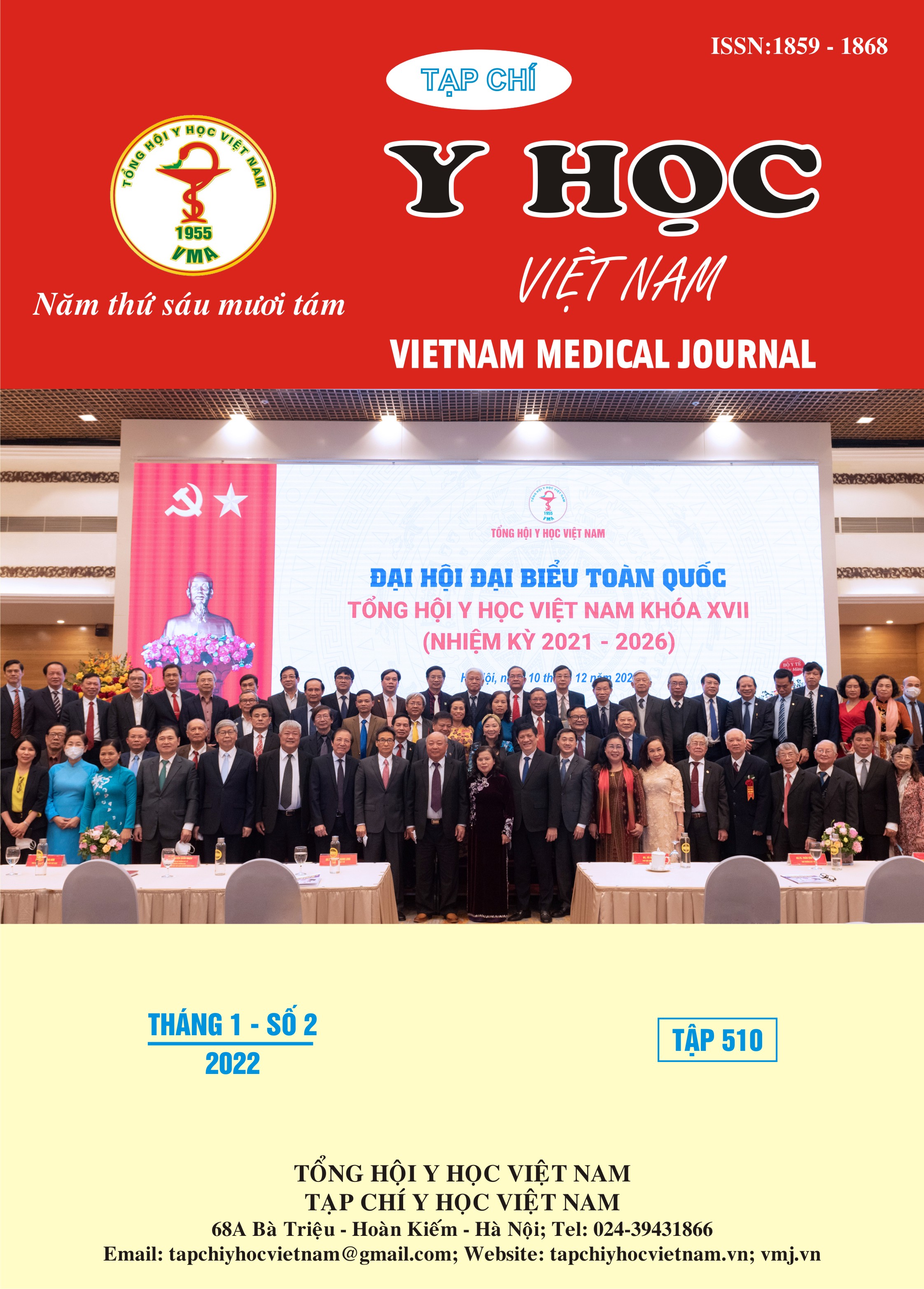EVALUATION OF TREATMENT RESULTS FOR STAGE I-III BREAST CANCER AT HANOI MEDICAL UNIVERSITY HOSPITAL
Main Article Content
Abstract
Objectives: To evaluate the treatment results and investigate the related factors affecting survival of stage I-III breast cancer patients. Patients and Methods: Restropective study on 140 stage I-III breast cancer patients treated at Oncology and Palliative Care, Hanoi Medical University Hospital between October 2015 and December 2020. Results: Mean age was 51.7±10,9. Upper outer quadrant was the most common site (55.4%). Most patients had ductal invasive tumor (79.2%). Stage I, II, III patients accounted for 9.3%, 52.1%, and 38.6%, respectively. 5-year OS and DFS was 84% and 74%, respectively. 5-year OS and DFS in patients with node negative is significantly higher than patients with node positive (90% vs 70%, p=0.048; and 80% vs 62%, p=0.033). Conclusion: 5-year OS was high in breast cancer patients treated with standard treatment. Axillary node positive is an adverseprognostic factor in survival.
Article Details
Keywords
Breast cancer, stage I-III
References
2. Trần Văn Thuấn (2014), Điều trị bệnh ung thư vú, Nhà xuất bản Y học, Hà Nội.
3. SEER. SEER Stat Fact Sheets: Female Breast Cancer, availabe at https://seer.cancer.gov/ statfacts/html/breast.html
4. Đỗ Thị Kim Anh, Trần Văn Thuấn và cộng sự. (2008). Đánh giá kết quả điều trị bổ trợ phác đồ 4AC-4Paclitaxel trên bệnh nhân UTV giai đoạn II-III Tạp chí Ung thư học Việt Nam, 1, 260-266.
5. Carter C. L., Allen C., Henson D. E. (1989). Relation of tumor size, lymph node status, and survival in 24,740 breast cancer cases. Cancer, 63(1), 181-7.
6. De Boer M., Van Dijck J. A., Bult P., et al. (2010). Breast cancer prognosis and occult lymph node metastases, isolated tumor cells, and micrometastases. J Natl Cancer Inst, 102(6), 410-25.
7. Andersson Y., Frisell J., Sylvan M. (2010). Breast cancer survival in relation to the metastatic tumor burden in axillary lymph nodes. J Clin Oncol,28(17), 2868-73.
8. Goldhirsch A., Wood W. C., Gelber R. D., et al. (2007). Progress and promise: highlights of the international expert consensus on the primary therapy of early breast cancer 2007. Ann Oncol, 18(7), 1133-44.


